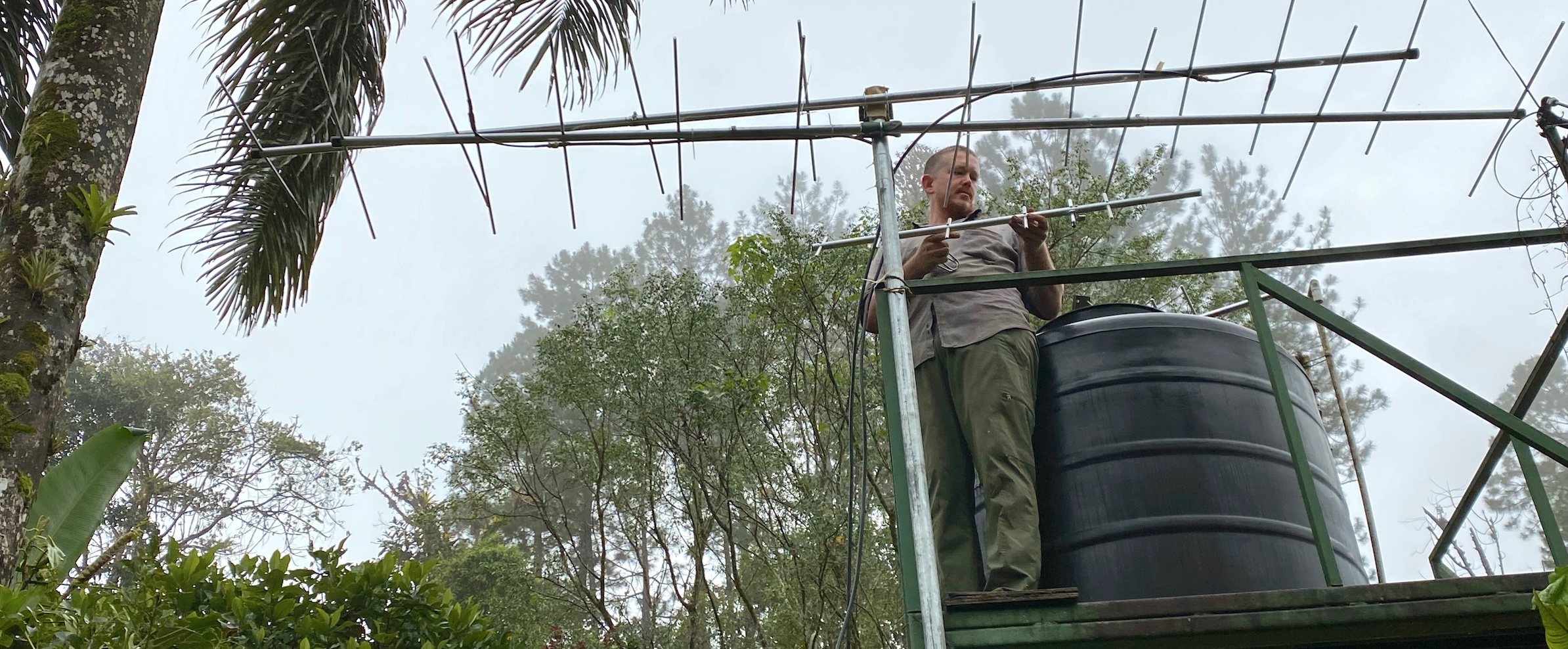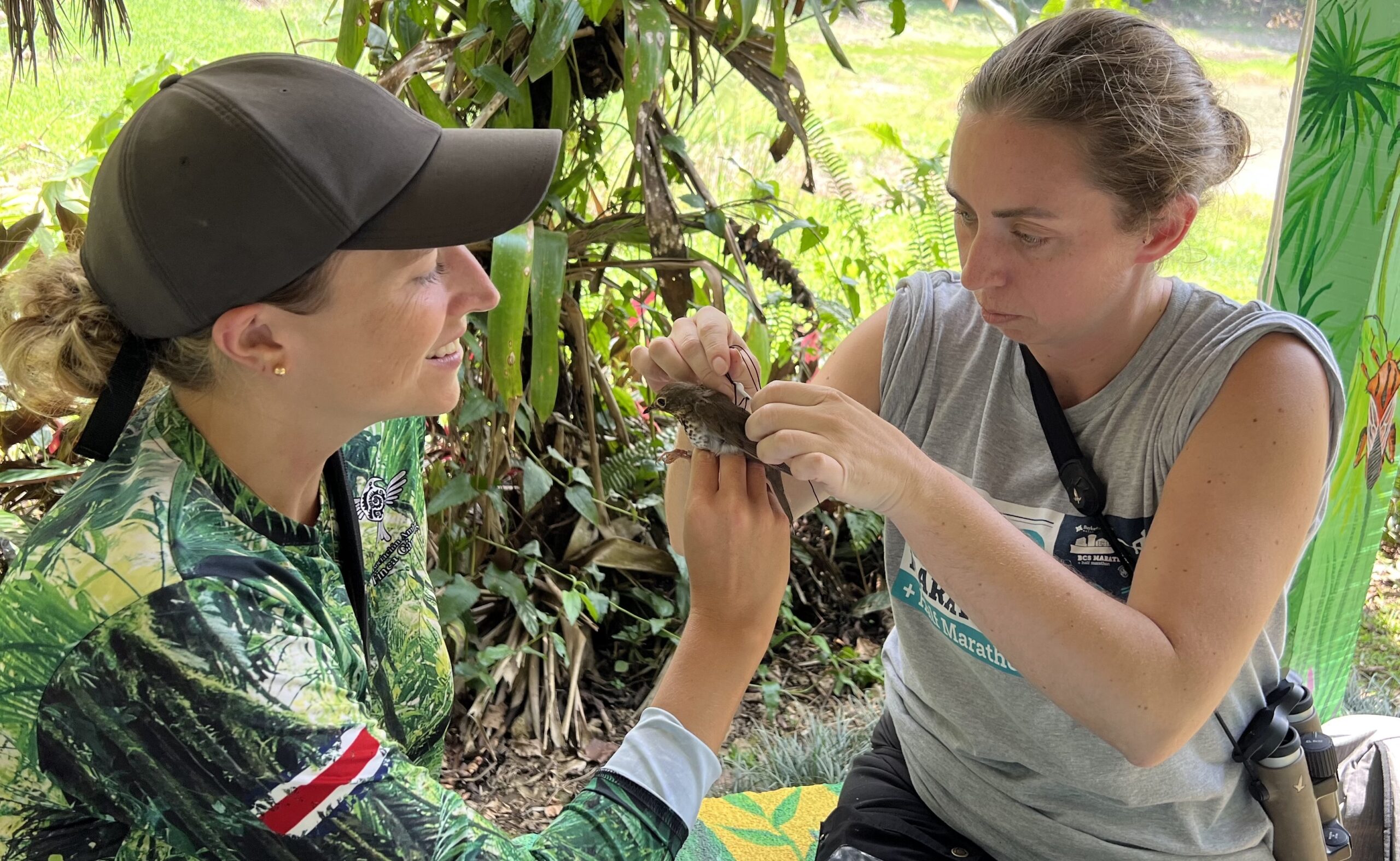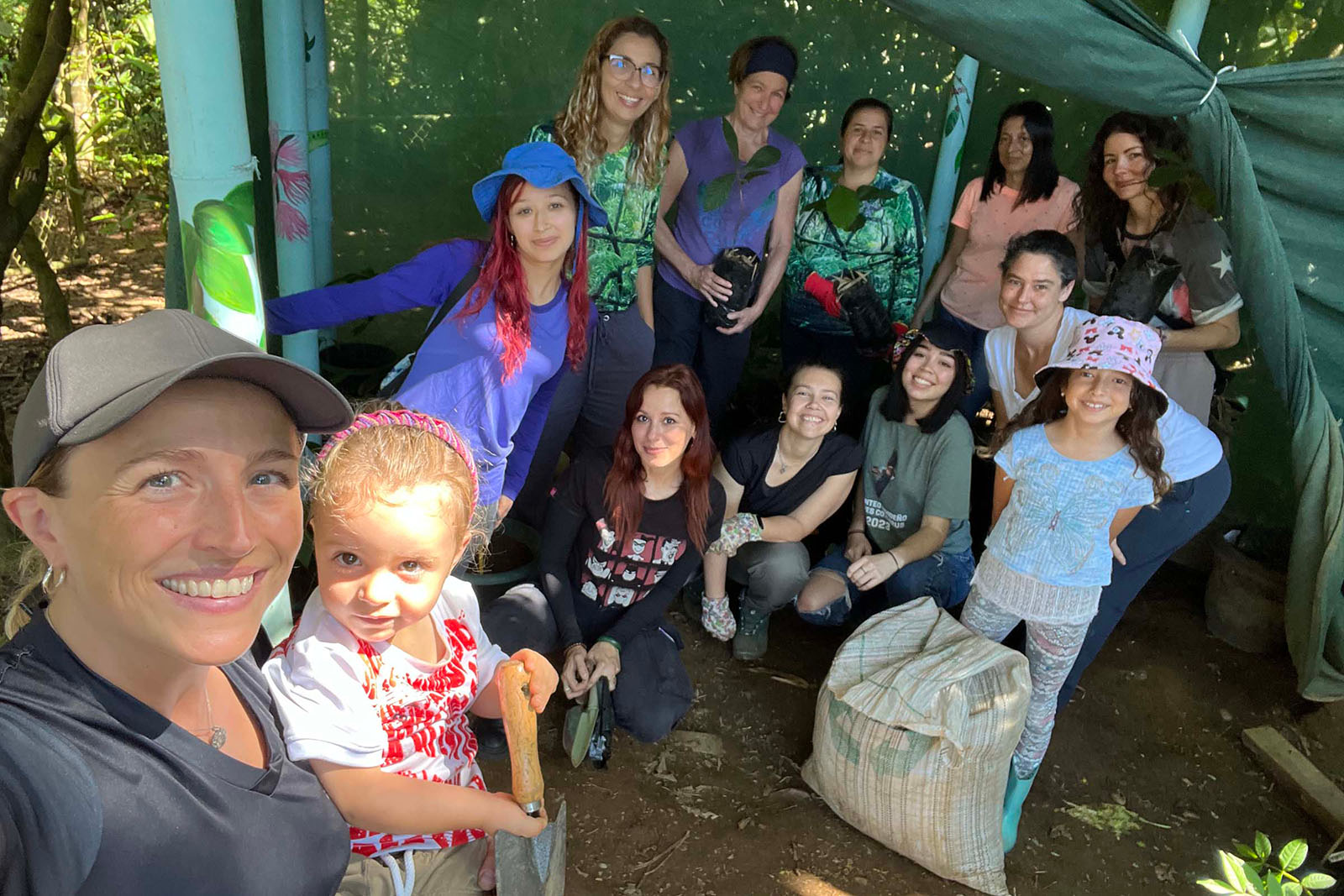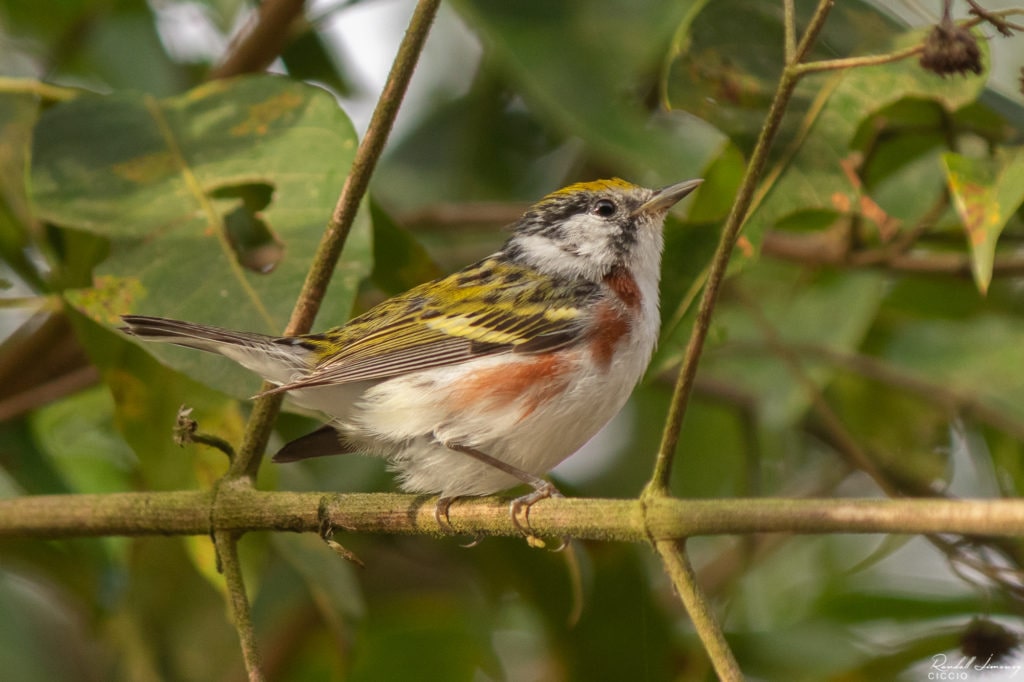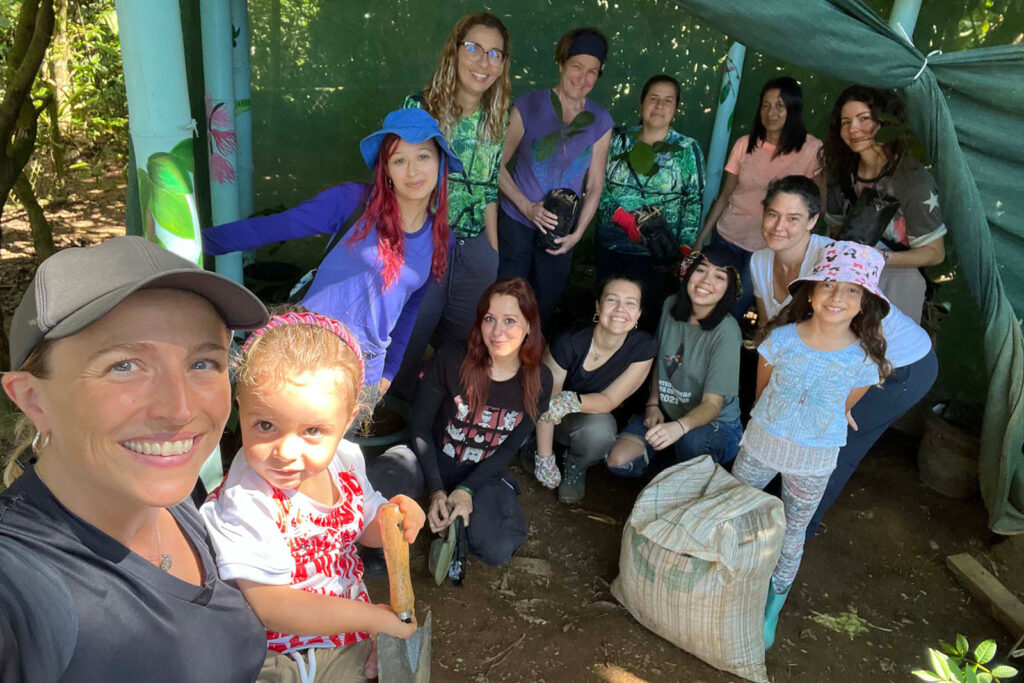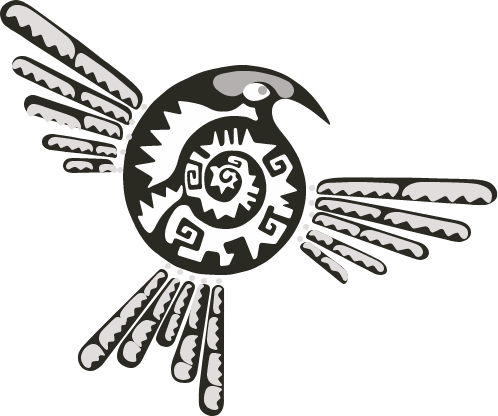Can you guess what this picture means for science and conservation?
What are you looking at in this picture? And why should you care?
This is not an announcement that Finca Cántaros got cable. Instead, we are excited to share that we have installed a Motus receiver!
A what?
Motus is the Latin word for movement.
A Motus receiver is part of the Motus Wildlife Tracking System, led by the organization Birds Canada.
The Motus Wildlife Tracking System “is an international collaborative network of researchers that use automated radio telemetry to simultaneously track hundreds of individuals of numerous species of birds, bats, and insects” (Birds Canada, 2020).
We will break that definition down into bite-sized pieces if you keep reading.
But first, we want to express our heartfelt thanks to Birds Canada, Proyecto Cerulea (Costa Rica), and Cellular Tracking Technologies for their donations of equipment, time, expertise, and perhaps most importantly, ongoing cheers of virtual support given that shipping the Motus materials meant dealing with two Costa Rican institutions infamous for inefficient Motus—customs and the post office.
(Take this example of a WhatsApp text from Correos de Costa Rica: “Señora Lilly Pascoe Briggs, to process your packages we require your full name and phone number.” Let that sink in.)
Proyecto Cerulea partners Ernesto Carman and Paz Irola, in collaboration with Birds Canada and the Colombian non-profit organization SELVA, set up the first Motus receiver in Costa Rica at Reserva Las Brisas, located near Siquirres on the northeast Caribbean slope. Ernesto and Paz made a long trip down to this southwest Pacific-facing corner of the country to help us install only the second Motus receiver on Costa Rican soil.

Finca Cántaros is now officially part of the “international collaborative network” mentioned above and exemplified by this map. This network of hundreds—not just researchers but educators, organizations, and individual citizens as well—is significant to science and conservation.
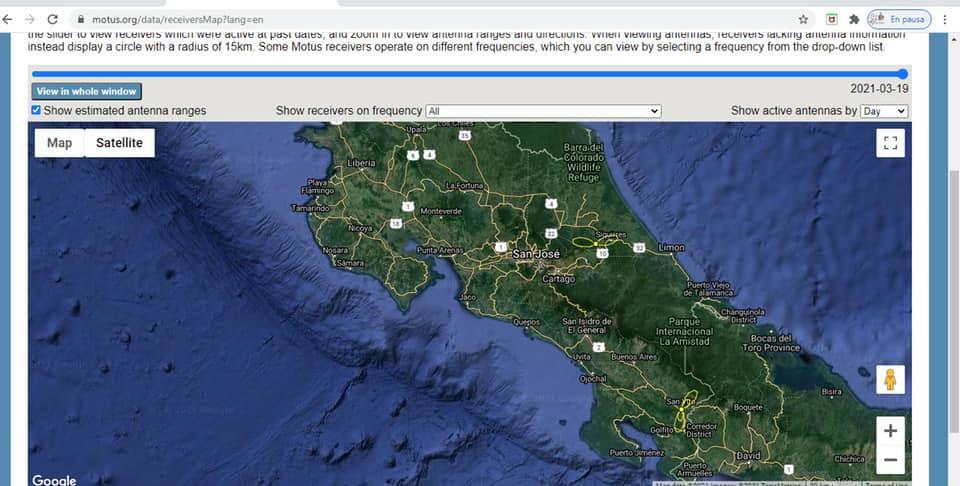
Fighting nonsensical bureaucracy was worth it.
But why?
Let’s take the example of birds. Many species migrate long distances, breeding in Canada or the United States during the northern summers and spending up to eight months of their non-breeding season in Neotropical countries such as Costa Rica. By attaching a radiotag to a migratory bird like a Swainson’s Thrush, so long as that individual thrush is within the range of the transmitters signal, scientists can determine its location and movements without having to see it.
Instead, the Motus receiver “sees it.”
Perhaps “tower” is a bit misleading, since the name suggests a structure that looks much more like… a tower. And yet you are looking at a photo of antennas.
But these antennas are special because they are connected to a device called a “SensorStation,” which in turn detects the radiotag attached to that Swainson Thrush. Or a radiotag that a researcher attached any other bird, bat or insect.
And that, my friends, explains automated radio telemetry, and how it is used to simultaneously tracks hundreds of individuals of numerous species.

So now we’ve answered the question of what this picture represents. But we can still add arguments to why you should care.
The more who join this collaborative network—which can be described as citizen science or community science—the more we can collect important data about birds, bats or insects across long time periods and large distances than would otherwise be possible. This data allows us to respond better to scientific questions in many scientific fields of study, from population ecology to animal behaviour.
It also allows us to create more informed and robust conservation strategies. Going back that Swainson’s Thrush, it is a species that needs healthy habitats in multiple strategic places: breeding grounds, non-breeding grounds, and all the stopover spots in between. Motus receivers, and the collaborations between people managing these receivers, facilitates a better understanding of the habitat needs and threats of countless species, and how we can do a better job protecting them.
